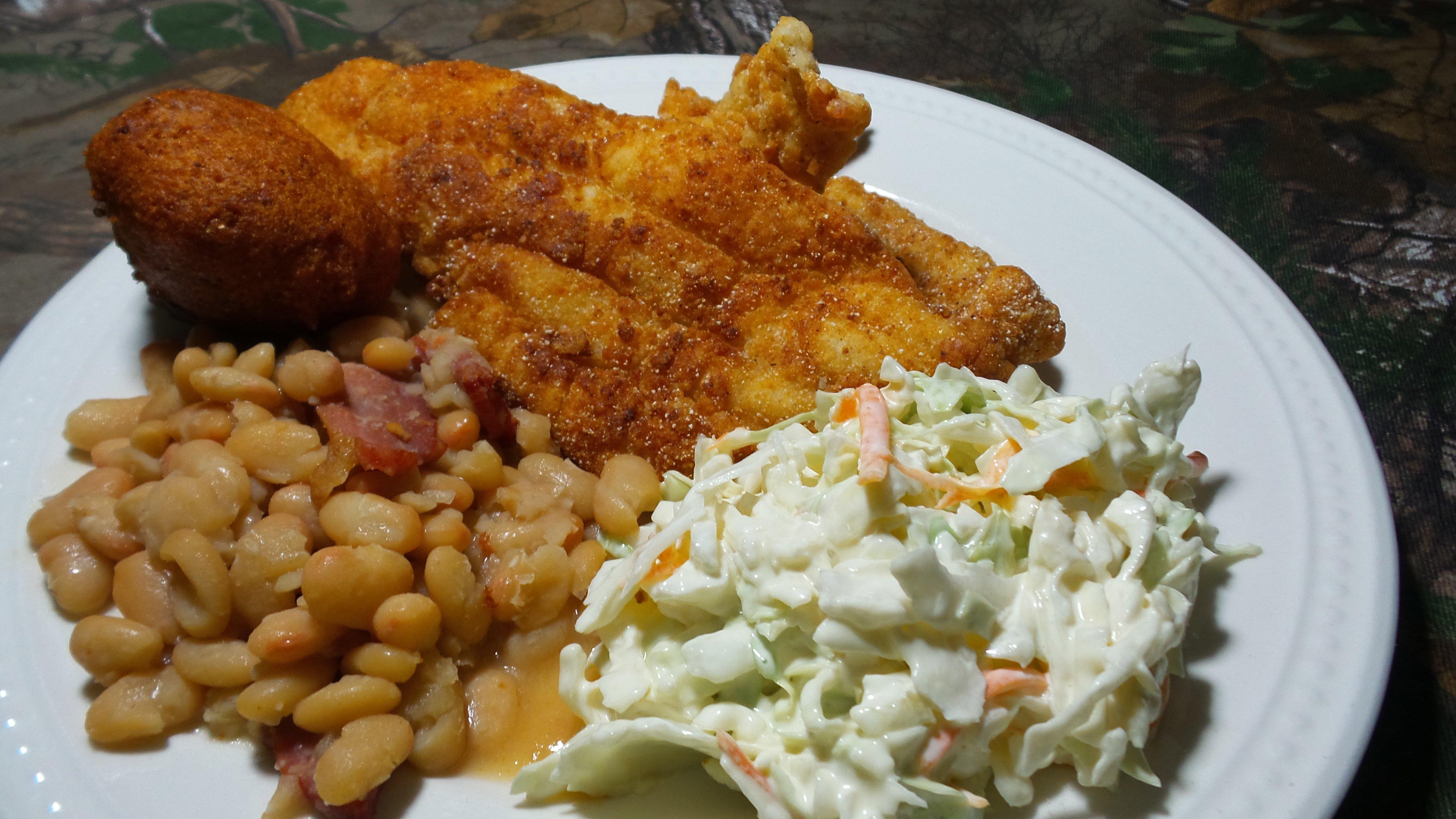How to Fry Fish (or just about anything else) Like a Pro
How to Fry Fish (or just about anything else) Like a Pro
30 Min
Prep Time
30 Min
Cook Time
3-5
Servings
Medium
Difficulty
Ever wonder why the catfish or chicken your grandmother fried tastes so much better than yours? Or why the fish at many southern-style restaurants have a flavor you haven't been able to match at home? One reason might be that they probably use a bit, or more than a bit, of lard in their fryer.
I can hear the gasps from here. What? Use lard? But it isn't healthy! you say. Yes it is. Well, maybe not in large quantities and definitely not every day, but a little bit from time to time won't hurt you. Our grandparents and great grandparents used it for everything, and many of them are still around to tell us about how good the food was back then.
Most grocery stores sell lard, if you don't see it next to the Crisco and vegetable oil, check on the Mexican food aisle. If you can't talk yourself into frying entirely in lard, mix a bit into your vegetable or peanut oil for the added flavor and crisper texture it will provide.
Once you have settled on your frying medium, the next step is to get it hot enough before starting to fry your food. Use a thermometer to monitor your oil temperature and shoot for 325 to 350 degrees before frying. Cooler than that and the food soaks up oil before the crust seals, hotter than that and the breading starts to burn before the interior of the food can cook through. Add the food slowly and in small batches to keep from cooling the temperature of the oil. Make sure you use enough oil to completely submerge the food you are frying, but don't fill the pot so full that the hot oil bubbles over when you add the food. Cast iron Dutch ovens make great pots for deep frying. The heavy iron helps to maintain a more even temperature throughout the fry and they are sufficiently large to hold the amount of oil needed to get the job done.
Another tip for getting a prime crust on fish is to pat the filets dry before dusting them in the coating of choice. If there is too much moisture on and in the filet, it gets trapped by the coating when the fish is dropped into the hot oil. That moisture will seep through the crust from the inside, leading to mushy fish. Simply pat the filet with a clean kitchen or paper towel to make sure they are relatively dry before breading.
Don't be in a hurry. Once you have breaded your fish or other meat, spread it out on a wire rack to set up before dropping it into the hot oil. Drying anywhere from five to 15 minutes allows the crust to harden a bit and helps it to stick to the food. Frying too soon after breading ends up with more crust in the bottom of the pan than stuck to the food.
Once you remove the food from the oil, drain it well. Don't be in a hurry to get the food onto a plate when you lift it from the hot grease. Use a wire spider or slotted spoon to allow most of the grease to drain back into the pot. Transferring the freshly fried food onto a wire rack suspended over a sheet pan instead of directly onto paper towels allows even more of the grease to drip away and keeps your breading at maximum crunch level.
Save the salt for the end. It's ok to put a bit of salt into your breading mix, but leave it on the light side. Follow a tip from the pros and give your food a light sprinkle of salt as soon as it comes out of the fryer and goes onto the drain rack. The hot oil that remains on the surface melts the salt into an even layer across the surface of the food and heightens the other flavors as your bite through it.
Ingredients
1-2 pounds fresh catfish (or any flaky white fish) filets
2 cups flour
2 cups corn meal
2 tablespoons Cajun seasoning
1 teaspoon Old Bay or other seafood seasoning
1 teaspoon salt
Cooking Instructions
Over medium high heat, pour 1 inch of oil into a cast iron Dutch oven and add enough lard to raise the level to 2 inches of total oil. Maintain a 325-350 degree temperature range.
Mix all dry ingredients well in a plastic tub with locking lid or a large paper bag. Pat the fish filets dry and drop into the breading. Shake well and place the coated fish onto a wire rack for five minutes to allow crust to set.
Drop the fish filets, one at a time, into the 350-degree oil. Don't overcrowd the pan. Let the fish fry for four to six minutes for 1/2-inch-thick filets, or eight to 10 minutes if filets aproach an inch thick. The fish should float to the surface when done. Lift the filets and let excess oil drain back into the pot and then transfer to a wire rack to continue draining. Hold finished fish in a 175-degree oven while the following batches fry.








